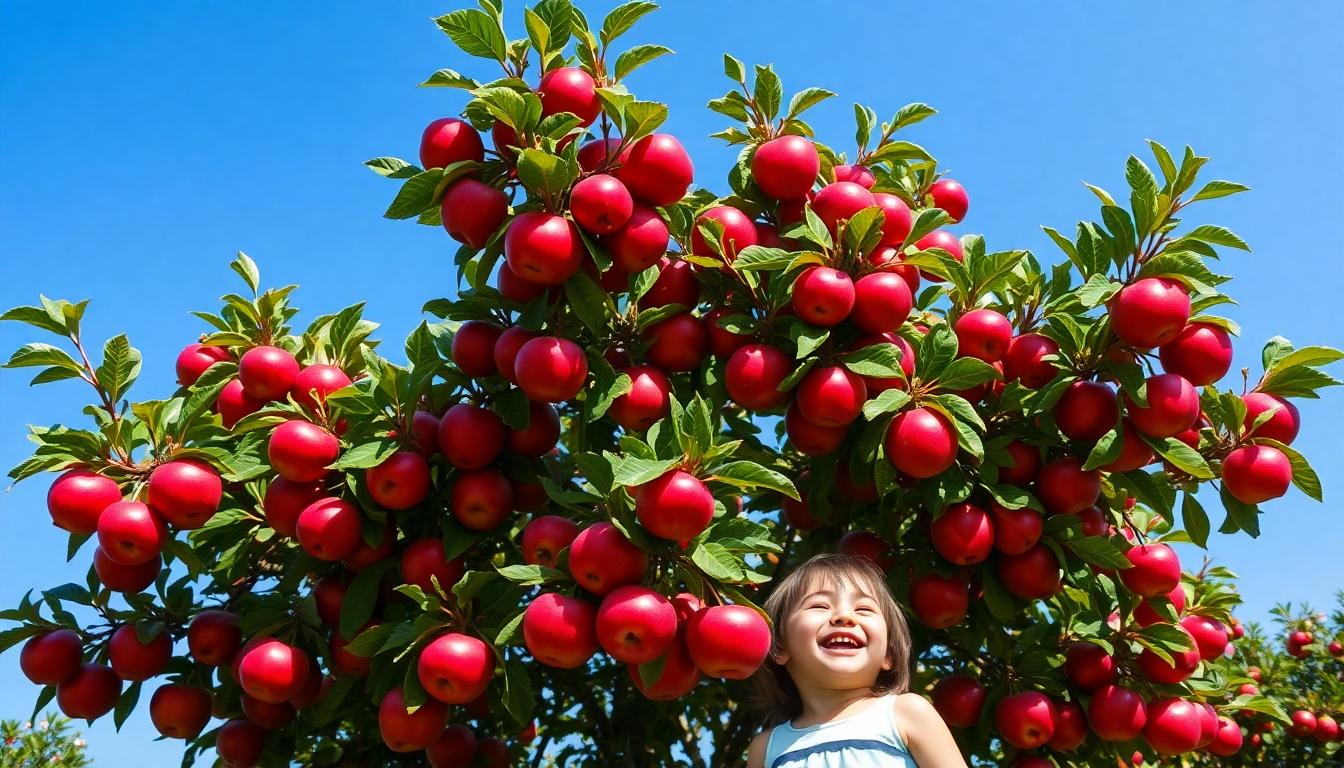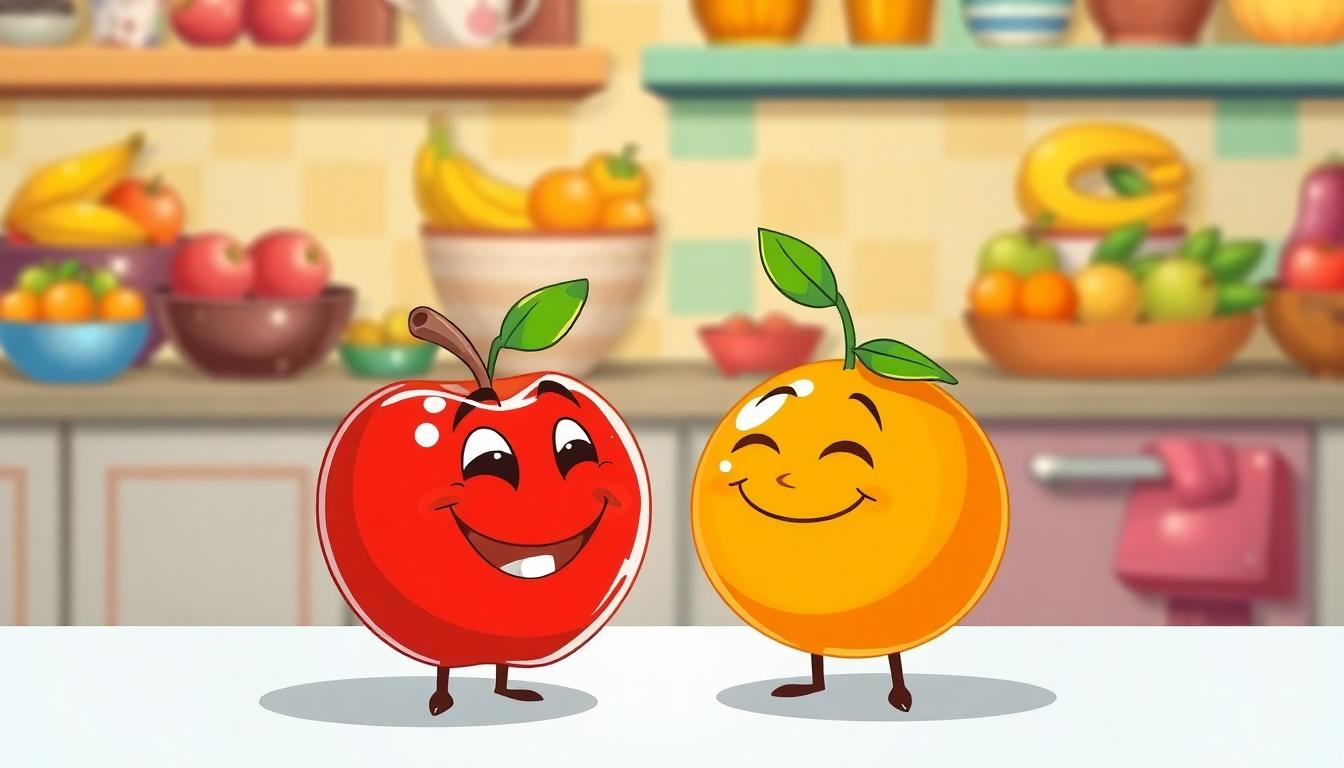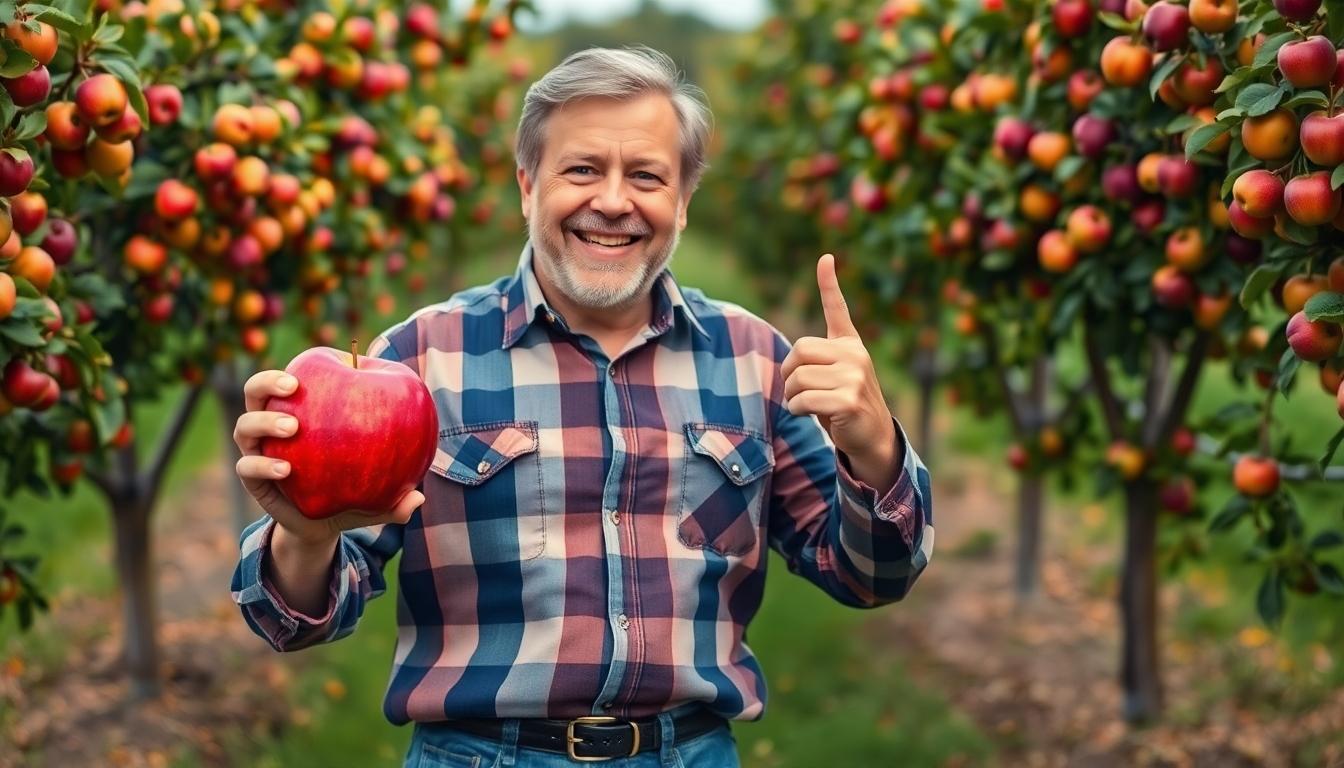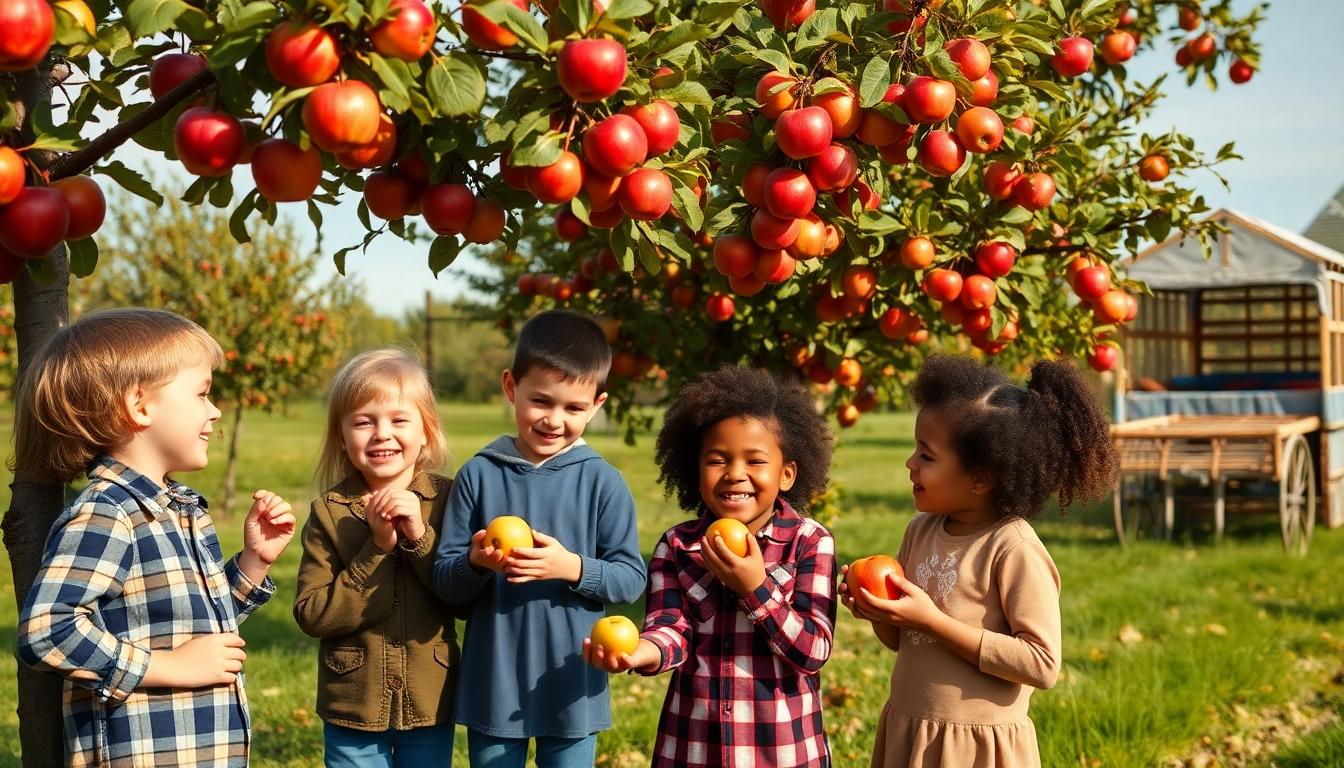Looking for a healthy dose of humor? We’ve gathered the juiciest apple jokes that are sure to keep you and your friends laughing for hours. From clever puns to hilarious one-liners, these apple-themed jokes are perfect for teachers, parents, and anyone who appreciates fruit-based comedy.
Whether you need an icebreaker for your next party or want to brighten someone’s day with a quick chuckle, our collection of apple jokes hits the sweet spot. They’re core-tainly entertaining and may just be the pick-me-up you need! Ready to take a bite out of some apple humor? Let’s jump into these a-peel-ing jokes that are ripe for the picking.
10 Crisp and Juicy Apple Jokes to Brighten Your Day
- Why did the apple go out with a fig? Because it couldn’t find a date! Fruits make excellent punchlines in jokes that rely on wordplay between different types of produce.
- How do you make an apple puff? Chase it around the garden! This playful joke uses the double meaning of “puff” as both a pastry and an action of breathlessness.
- What did the apple say to the almond? You’re nuts! We love this simple joke that plays on the literal characteristics of different foods.
- Why couldn’t the apple ask the orange out on a date? It didn’t have the peel! Puns that incorporate fruit characteristics are always a hit at parties.
- What’s an apple’s favorite mode of transportation? A pear of shoes! This joke combines the similar sound of “pair” and “pear” for a delightful wordplay.
- How does an apple introduce its partner? Meet my core values! The double meaning of “core” works perfectly in this clever one-liner.
- Where do apples go to dance? The Fruit Roll-up! Dancing jokes combined with popular fruit snacks create memorable punchlines for all ages.
- What do you call an apple that plays the trumpet? A tooty fruity! Musical instrument jokes paired with fruit names offer a sweet melody of humor.
- Why was the apple so good at math? It was the teacher’s pick! School-themed apple jokes reference the traditional gift for teachers.
- What’s red and goes up and down? An apple in an elevator! Sometimes the simplest jokes deliver the most unexpected laughs with their straightforward approach.
Why Apple Jokes Are the Core of Fruit Humor

Apple jokes have firmly established themselves as the foundation of fruit-based humor thanks to the apple’s universal recognition and cultural significance. These jokes use clever wordplay centered around terms like “core,” “peel,” and “apple of my eye,” creating a rich tapestry of humor that resonates with diverse audiences. Some of our favorites include classics like “Why did the apple cry? Its peelings were hurt!” and “Why do apples make good detectives? They always get to the core of things.”
The Universal Appeal of Apple-Themed Comedy
The widespread popularity of apple jokes stems from the fruit’s symbolic presence across different cultures and stories throughout history. Apples appear prominently in biblical narratives such as Adam and Eve and in ancient mythology like the Trojan War, providing a common reference point that transcends cultural boundaries. This deep-rooted symbolism gives apple-themed humor an exceptional ability to connect with people from various backgrounds and experiences. We’ve found that the simplicity of apple imagery combined with its rich cultural associations creates the perfect foundation for jokes that nearly everyone can appreciate and understand.
How Apple Jokes Connect Across Generations
Apple jokes serve as a bridge between age groups by employing straightforward, intuitive humor accessible to both children and adults. The combination of simple wordplay with situational comedy ensures these jokes remain entertaining regardless of the audience’s age. Children delight in the literal humor of questions like “How do apples greet each other? A tooty fruity!” while adults appreciate the subtle wordplay. We’ve observed that apple jokes often become shared family experiences, with parents passing down their favorite fruit-based quips to their children, creating a comedic language that strengthens bonds between generations. The apple’s familiar presence in daily life reinforces this connection, making these jokes a timeless form of humor that rarely grows stale.
Top Apple Puns That Will Keep the Doctor Away

Ready for some juicy wordplay? We’ve harvested the best apple puns that perfectly balance sweet humor with tart wit, guaranteed to make anyone smile.
Sweet and Tart One-Liners
These bite-sized apple jokes deliver instant laughs with their clever wordplay:
- Want to keep people at a distance? Try this health spin: “An apple a day keeps anyone from getting too close!”
- Apples have feelings too! “Why did the apple cry? Its peelings were hurt!” This emotional appeal works every time.
- Apples dream big with goals like “becoming a byte-sized snack” – perfect for our tech-obsessed industry.
- Math lovers appreciate this circular reasoning: “What do you get if you divide an apple’s circumference by its diameter? Apple pi!”
- Tech enthusiasts know that “the iPhone’s favorite fruit is an apple—of course.” This connection makes perfect sense!
Seed-Filled Wordplay
These puns dig deeper into apple culture with more complex wordplay:
- Express affection with “You’re the apple of my pie” or celebrate “finding joy in every crunchy apple bite.”
- Technology meets agriculture when you realize “Apple orchards are the original download sites.”
- Communication between fruits is fascinating: “How do apples greet each other? ‘Hi, core-respondent!'”
- Education gets fruity when “the apple took a core acting class” or when “a polished apple should get high marks.”
Apple Knock-Knock Jokes for Kids and Adults

Classroom-Friendly Apple Humor
Teachers love incorporating apple-themed jokes into their lesson plans to keep students engaged while learning. “What’s a math teacher’s favorite dessert? Apple Pi!” has become a classroom classic that blends humor with educational concepts. Students particularly enjoy the behavioral humor found in jokes like “Why did the apple get detention? It was caught biting during class!” These witty one-liners create a positive learning environment while reinforcing core concepts. “What did the teacher say to the apple? You’re a good core-model!” serves as both a clever pun and a positive reinforcement message that resonates with younger learners. Apple jokes function as excellent icebreakers for new classes or refreshing mental breaks during challenging lessons.
Family-Friendly Fruit Laughs
Apples provide endless material for wholesome humor that brings families together through shared laughter. “What do you call an apple that plays the trumpet? A toot-fruit!” delivers clean comedy appropriate for all ages at family gatherings. Parents appreciate jokes like “What’s it called when someone from Apple gets fired? Apple turnover!” which work on multiple levels for different age groups. Children giggle at the visual humor in “Why was the apple uncomfortable in the fruit bowl? Pear pressure!” while adults catch the subtle wordplay. Tech-savvy families particularly enjoy crossover jokes that blend fruit and technology, such as “Why don’t robots like apples? Because they’re androids!” These versatile jokes create bonding opportunities when families share fruit salad or apple pie desserts, turning mealtimes into memorable moments filled with laughter and connection.
Apple Jokes for Teachers and Classrooms

Apple jokes have become a staple in educational settings, bringing laughter while creating positive learning environments. Teachers consistently find these fruit-themed quips to be effective tools for building rapport with students.
First Day of School Ice Breakers
Starting a new school year can be intimidating for both students and teachers, making apple-themed jokes perfect ice breakers to ease tension. “Why did the apple go to the library? It wanted to find books that were ‘hard to crack’ like a good nut!” creates immediate smiles and helps students relax. Many educators begin with enthusiasm by announcing “The apple is here to crush this semester!” which instantly sets a positive, energetic tone for the academic year. These playful openers work particularly well when introducing classroom rules or beginning activities, as they help students feel comfortable while establishing a friendly atmosphere. Teachers often incorporate these jokes into name tags or welcome activities, making those critical first impressions more memorable and enjoyable.
Educational Apple Humor
Integrating apple jokes into academic content makes learning more captivating while reinforcing key concepts across subjects. “What’s an apple’s favorite subject? The Pie-thagorean theorem!” cleverly connects fruit humor with mathematics principles, making abstract concepts more relatable. Students respond enthusiastically to jokes about “core subjects,” with teachers asking “How do apples get good grades? They stay focused in the core subjects!” which subtly emphasizes the importance of foundational knowledge. Academic humor extends to appreciation jokes between staff members, with principals telling teachers “I couldn’t have ‘picked’ a better teacher,” boosting morale throughout the school. Classroom puns like “Don’t sit too far from the apple tree, that’s where the best teachers be!” create a culture where learning feels less formal and more accessible, encouraging student participation and engagement in daily activities.
Apple-Based Riddles to Test Your Knowledge

Apple riddles range from simple wordplay to complex logical puzzles that can challenge even the sharpest minds. These brain teasers offer a fun way to engage your problem-solving skills while enjoying fruit-themed humor.
Challenging Brain Teasers
Looking for apple riddles that will truly test your wits? The most challenging apple brain teasers often involve logic puzzles that require thinking outside the box. One popular mind-bender poses this scenario: “A bus driver gives 10 apples to his beloved before a trip.” The solution hinges on recognizing the driver’s profession as a doctor’s colleague and understanding the symbolic meaning of apples in medical contexts. Many people get stumped by the “basket logic” riddle where four girls take apples, yet one still remains—the answer is that one girl takes the entire basket containing the apple. Math-based apple puzzles also present a delightful challenge, such as “If there are three apples and you take two away, how many apples do you have?” The answer is two (the ones you took), not one as many might initially assume. Family logic riddles like “How can 3 apples be divided among 2 fathers and 2 sons?” test your ability to recognize relationships—the solution involves a grandfather, father, and son trio.
Easy Apple Riddles for Young Children
For the little ones, apple riddles offer a perfect introduction to wordplay and critical thinking. Description-based riddles like “Tree’s delicate bloom, spring’s first sight” provide gentle clues that lead children to guess apple blossoms. Simple object identification puzzles such as “Round and red, grows on a tree” are perfect for preschoolers learning about fruits and colors. Sweet and straightforward riddles like “Sweet and crunchy bite, flavor so right. What is it?” (Answer: Apple slice) help young minds make connections between descriptions and objects. Kids especially enjoy these fruit-themed brainteasers because they relate to something familiar in their everyday lives. Mobile apps designed for children, including “Riddles & Best Brain Teasers” with over 400 puzzles and “Best Riddles” containing more than 3,000 entries, feature dedicated “Fruits and Vegetables” sections where apple-themed riddles frequently appear. These accessible puzzles make learning fun while developing problem-solving skills in an age-appropriate way.
Comparing Apples to Oranges: Fruit Joke Showdown

The age-old expression “comparing apples to oranges” takes on a hilarious twist when these fruits face off in the comedy arena. Linguistic studies have shown that fruit-based humor relies heavily on cultural idioms and metaphorical expressions that have evolved over time. According to research in linguistic analysis of jokes, the structure of fruit-based humor often incorporates puns and clever misinterpretations that appeal to a wide audience.
Apple jokes typically leverage common idioms like “the rotten apple spoils the barrel,” creating humor through familiar cultural references. Studies in workplace dynamics have explored how these expressions function beyond mere jokes, demonstrating the metaphorical power of apple-related language. Orange jokes, meanwhile, tend to focus on wordplay involving the fruit’s color, segments, and the challenge of rhyming with “orange.”
The competition between these fruity joke categories reveals interesting patterns in how we process humor:
- Pun Potential: Apple jokes offer more wordplay opportunities with terms like “core,” “seed,” and “peel” that double as verbs and nouns. Research on linguistic devices in jokes highlights how these dual-meaning words create the cognitive surprise essential for humor.
- Cultural References: Oranges may not have the mythological weight of the forbidden fruit, but they bring their own zesty humor through associations with juice, segments, and peeling difficulties. Cultural studies show that these references tap into shared experiences for comedic effect.
- Audience Appeal: Scholars studying humor with intelligent personal assistants note that apple jokes often work better with younger audiences due to simple wordplay, while orange jokes sometimes incorporate more complex social commentary.
- Crossover Comedy: The most successful fruit jokes often pit these fruits against each other, such as: “Why was the apple jealous of the orange? Because the orange could concentrate!” This approach leverages what researchers call “contrast humor” – finding comedy in comparing different entities.
Fruit humor represents a fascinating intersection of linguistics and cultural studies, turning everyday items into sources of laughter. The metaphorical use of apples in expressions like “apple of my eye” provides rich material for comedic exploration. Research emphasizes how these “good apple” references create positive associations that contrast with the “bad apple” trope, offering balanced comedic potential.
The friendly rivalry between apple and orange jokes demonstrates how humor can transform simple objects into sophisticated comedy through linguistic devices and cultural understanding. While dedicated research on apple jokes specifically may be limited, broader humor studies provide valuable insights into why these fruity punchlines continue to make us smile.
How to Craft Your Own Apple Jokes

Master the Core Elements
Creating your own apple jokes starts with understanding the fundamental elements that make them work. Wordplay forms the foundation of great apple humor, particularly using homophones like “core” versus “corps” or clever compound terms such as “Apple Pi” when referring to the mathematical constant. You’ll find success by reinterpreting common phrases with an apple twist—transforming “insider information” into “incider information” creates an instant chuckle. We recommend experimenting with apple varieties in your jokes, using names like Cameo for “brief appearances” or integrating Honeycrisp into scenarios that highlight their sweet characteristics.
Focus on Physical Traits
Apple jokes thrive when they reference the fruit’s distinctive physical characteristics. Highlighting an apple’s round shape (“Why don’t apples ever go far? They always look round!”) instantly creates visual humor. The texture of apples provides another rich source of comedy—references to “bruised” apples can set up many punchlines. Orchard imagery works wonderfully too, with jokes like “Why was the orchard so hot? Because the orchard’s on fire!” demonstrating how absurdity can elevate simple apple-based humor.
Incorporate Cultural References
Leveraging well-known cultural touchpoints dramatically improves your apple jokes. Apple Inc. references work exceptionally well—jokes about being “Steve Jobless” connect the fruit to technology in an instantly recognizable way. Famous idioms like “an apple a day keeps the doctor away” serve as perfect setups for unexpected punchlines. We’ve found that these cultural connections create immediate familiarity, allowing your audience to quickly engage with the humor.
Follow a Step-by-Step Process
Building effective apple jokes requires a methodical approach. First, identify exact targets for your wordplay, focusing on apple-related terms like tree, pie, and cider, or explore homophones such as pear/pair and core/corps. Next, add contextual humor by placing apples in unexpected scenarios—for example, “Why did the apple cross the road? To be a squash!” Finally, test your joke for simplicity, as concise setups like “What’s an apple’s favorite game? Core and seek” typically land better with audiences due to their quick comprehension.
Explore Different Joke Types
Diversifying your apple joke portfolio keeps your humor fresh and captivating. Puns represent the most common form, with classics like “What’s a math teacher’s favorite dessert? Apple Pi.” Situational jokes that create mini-stories, such as “An apple and orange walk into a bar…” offer narrative-driven humor. Combinations of wordplay and idioms deliver sophisticated comedy—”Why hire an apple pie? It’s crustworthy” demonstrates this perfectly by playing on “trustworthy” while referencing pie crust.
Avoid Common Pitfalls
Successful apple joke creation requires sidestepping several common traps. Overused themes, particularly repetitive “core” jokes, quickly become stale unless you’re adding fresh context or unexpected twists. Complex wordplay presents another challenge—ensure your puns remain decodable for your audience. While “crab apple pie” works because the terms are widely understood, overly niche references might leave listeners confused rather than amused. We suggest testing your jokes with different audiences to gauge their effectiveness before sharing them widely.
The Best Occasions to Share Apple Jokes

Apple jokes aren’t just for anytime laughs—they’re perfect for exact occasions where they can truly shine. We’ve identified the perfect moments to drop these fruity punchlines for maximum impact:
Educational Settings
Teachers love using apple jokes to spice up their classroom lessons. These witty one-liners work wonderfully during nutrition units, botany lessons, or when explaining idioms like “an apple a day keeps the doctor away.” Students engage more actively when humor connects to the curriculum, making complex concepts more digestible and memorable.
Fall Festivals and Apple-Picking Events
Nothing complements an autumn orchard visit like a good apple joke. Quips such as “What kind of apple throws the best parties? Gala apples!” perfectly capture the festive spirit of harvest season. These jokes naturally blend with the ambiance of apple cider tastings, pie contests, and hayrides that characterize fall festivals.
Thanksgiving Gatherings
Family tensions can melt away with apple humor at Thanksgiving dinner. Puns like “Good-pie everyone!” (as if spoken by an apple pie) offer lighthearted entertainment when passed around with the traditional apple desserts. These jokes create memorable moments during the sometimes stressful holiday season.
Corporate Icebreakers
Tech companies particularly appreciate the double entendre of Apple-brand jokes during meetings. Lines such as “Why did Apple buy a deer? They’d have an iDeer” break tension in professional settings while fostering team bonding. These jokes work particularly well during presentation breaks or virtual meeting warmups.
Family Reunions
Multi-generational gatherings benefit from universally appealing humor like “Why did the apple cross the road? To get to the other cider!” These jokes bridge age gaps, creating shared laughing moments between grandparents and grandchildren alike. Everyone can participate regardless of age or background knowledge.
Children’s Parties
Kids’ celebrations become more animated with apple-themed humor. Jokes involving silly competitions (“Let’s peel out!”) or personified fruits entertain young audiences while complementing fruit-themed games or crafts. These simple jokes keep children engaged during party transitions or snack times.
Social Media Content
Short, pun-based apple jokes generate impressive engagement on platforms like Instagram and TikTok. Unexpected punchlines like “An apple a day keeps anyone away if you throw it hard enough!” drive shares and comments. These concise jokes fit perfectly within character limits while still delivering humor that resonates with online audiences.
Health and Wellness Workshops
Nutrition-focused events become less clinical with strategic apple humor. Jokes like “Why did the apple turn red? It wanted to avoid being too ripe!” lighten the atmosphere while still keeping focus on healthy eating habits. Workshop leaders can use these jokes to make nutritional advice more approachable and memorable.
Conclusion: Why Apple Jokes Never Fall Far From the Humor Tree
We’ve peeled back the layers of apple humor to reveal why these fruity quips have such lasting appeal. From classroom icebreakers to family dinner tables apple jokes bring people together through accessible wordplay and universal recognition.
Their versatility shines in educational settings while providing wholesome entertainment for gatherings year-round. Whether you’re crafting your own apple puns or sharing classics at a fall festival these jokes connect generations through simple yet clever humor.
So next time you need a laugh remember that apple jokes are ripe for the picking. They’re timeless clever and always in season – proving that good humor is truly the core of human connection!
Frequently Asked Questions
Why are apple jokes so popular?
Apple jokes are popular because of the fruit’s universal recognition and cultural significance. They feature clever wordplay with terms like “core,” “peel,” and “apple of my eye,” making them relatable across different backgrounds. Their straightforward humor resonates with both children and adults, creating shared experiences that bridge generational gaps.
Can apple jokes be used in educational settings?
Absolutely! Apple jokes work wonderfully as classroom icebreakers, especially at the start of the school year. They create a positive learning environment, engage students, and can be integrated into academic content. Examples like “What’s a math teacher’s favorite dessert? Apple Pi!” blend humor with educational concepts, making learning more enjoyable.
What makes a good apple joke?
A good apple joke incorporates wordplay, references to physical traits (core, seeds, skin), and cultural connections. The best ones are simple yet clever, using puns or unexpected twists. Effective apple jokes are accessible to various audiences and often play on common idioms or expressions involving apples.
How do apple jokes compare to orange jokes?
Apple jokes typically leverage common idioms and puns related to cores and varieties, while orange jokes focus on wordplay related to the fruit’s color and segments. Both categories reveal patterns in humor processing through pun potential, cultural references, and audience appeal, showcasing the sophisticated comedy that can arise from simple objects.
When is the best time to share apple jokes?
Apple jokes are versatile and can be shared during educational settings, fall festivals, Thanksgiving gatherings, corporate meetings as icebreakers, family reunions, children’s parties, on social media, and even in health workshops. They’re particularly effective during apple-picking season and back-to-school periods when they have added contextual relevance.
Are apple jokes suitable for children?
Yes! Apple jokes are generally family-friendly and perfect for children. They provide clean humor that kids can understand and enjoy. Simpler jokes like “Why did the apple go to school? To get a little brighter!” are especially accessible to younger audiences, while still being entertaining for adults.
How can I create my own apple jokes?
Start by exploring wordplay related to apple characteristics (core, seeds, skin) and varieties (Granny Smith, Honeycrisp). Experiment with puns and unexpected twists, and consider cultural references. Avoid overused jokes and test your creations on different audiences. Remember to keep jokes simple, relatable, and appropriate for your intended audience.
Do apple jokes work well as icebreakers?
Apple jokes are excellent icebreakers in various settings. Their universally recognizable subject matter and lighthearted nature help ease tension and create a friendly atmosphere. Simple jokes like “What do you call an apple that plays the trumpet? A toot-fruit!” can quickly generate laughs and help people feel more comfortable in social situations.







